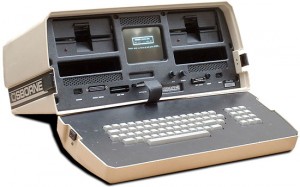If you’ve seen the Back to the Future series, you might have expected the future to be a little more… well, exciting. In the year 2015, cars without wheels whiz past Marty McFly as he stands spellbound in his self-lacing shoes. It’s the year 2013, and I hate to burst your bubble, but the creation and mass production of flying cars in two years time seems unlikely.
That’s not to discredit how far our technology has come. In a blog post written for smartsellingtools.com, Nancy Nardin asks how many people have recently written a letter with a quill pen and sent it off with a carrier on horseback. Thanks to the creation of email, probably not many of us can claim to have EVER done that. Another blog post written for techvert.com covers six technologies in existence today that were predicted by the 1960’s cartoon, the Jetsons. Tanning beds, video chat, and the iPad were all technologies that at one point seemed unthinkable, but were obtainable due to the creativity and the ingenuity of the human mind.
As emerging scientific finds brought about better technology, the world of sales experienced an evolution. New modes of communication and gaining information meant that businesses had to learn how to harness these different modes, and quickly. Since the 1980’s, the sales community has been running a race to keep up with the ever-changing technological world. Below are 5 evolutions in technology that have changed how the entire sales world operates.
1.) Projectors- Although the first projectors were released in the 1970’s, they didn’t really gain popularity in the sales world until the 1980’s, when people realized how easy it was to project presentations directly from their PCs to a screen. In the 1990’s, there was an emphasis on developing projectors that were thinner and lighter. The 2000’s brought about the world’s first civilian-use see-through mobile viewer by Epson. With this new device, users can view video content directly in front of their eyes.
2.) Mobile Phones- The first cell phones arrived on the scene in the 1980’s. While they were deemed excellent for keeping in constant communication with clients at that time, they had several flaws that today’s consumer would deem fatal. One of the flaws was that the system was unencrypted and vulnerable to eavesdropping via a scanner. In the 1990’s, the second generation of cell phone emerged, and the first full internet service became available in 1999. The 2000’s brought about faster internet browsing thanks to 3G and 4G technologies. Today’s cell phones are more like mini-laptops with phone capabilities. Salespeople can answer phone calls, check their emails, and even lead track, all on the go.
3.) Laptop Computers- Along with Personal Computers (PCs), the 1980’s announced the creation of the first portable computer—because human beings are constantly trying to figure out how to mobilize our work. Portable computers were the first computers to come all in one package. They came with two built-in floppy drives, detachable full-sized keyboards, a built-in monochrome CRT monitor, and a leather carrying handle. In the 1990’s, computer developers ditched the carrying handles and were focused on creating bigger screens. By the 2000’s, our laptops have become sleeker, with an emphasis on good graphics, lighter weight, and longer battery life.
4.) Customer and Contact Management Systems- Before the creation of the World Wide Web, salespeople used simple contact management applications on their PCs to manage their leads. In the 1990’s, people realized that sales and customer service systems should share information. They merged the two existing systems at that time—Sales Force Automation and CRM systems (Customer Relationship Management)—to create a more comprehensive, web-based technology. With the increased popularity of social media in the 2000’s, programmers have been developing Social CRM, or CRM that focuses on using social media services, techniques, and technology to interact with customers.
5.) The World Wide Web- Until the late 1980’s, the internet wasn’t widely available. People instead used Personal Computers, or PCs, to store data. At that time PC’s used removable floppy disks, and came with a plastic case, keyboard, and video unit. It wasn’t until the 1990’s that the World Wide Web was launched. The web at this time was referred to as web 1.0, while the web after 2000 is referred to as web 2.0. Experts argue over the differences between web 1.0 and web 2.0, but all agree that websites created during the 1990’s are static and not interactive. Websites of today are characterized by being ever changing and highly interactive (think blogs and social media sites).
















